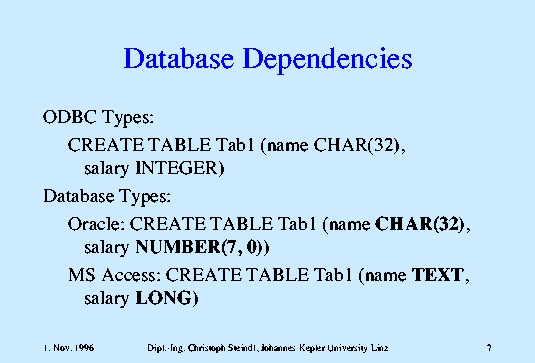Is Interoperability Achievable with ODBC?: Slide 7 of 10.
Click slide for next, or goto previous, first, last slides or back to thumbnail layout.

Click slide for next, or goto previous, or back to thumbnail layout.
To illustrate the database dependencies that you will have to face when you use ODBC, imagine the following: You want to create a table with two columns, one for the name of the employees and one for their salaries.
The problem is that you cannot just use ODBC types in the CREATE TABLE statement, but that you have to use the data types that are supported by the database.
In the case of Oracle we do not have the data type INTEGER, but only NUMBER.
In the case of MS Access, we cannot restrict the name of the employees to 32 characters, but have to use the datatype TEXT which accepts up to 256 characters.
The ODBC driver manager does not provide any mapping of the desired data types to the data types that are supported by the database that you are connected to. But the names of the data types in a CREATE TABLE statement must be exactly in the form as they are supported by the database.
